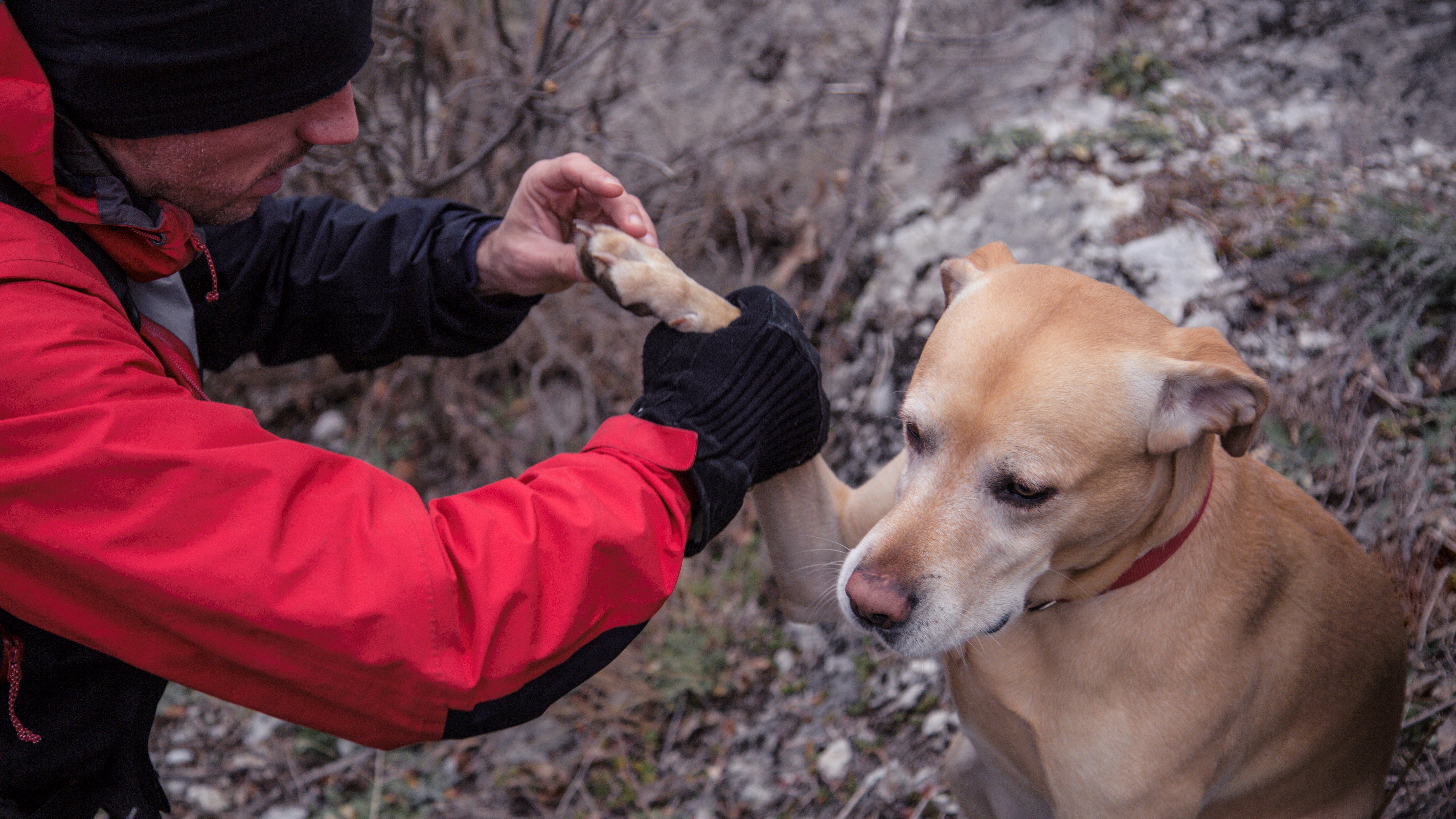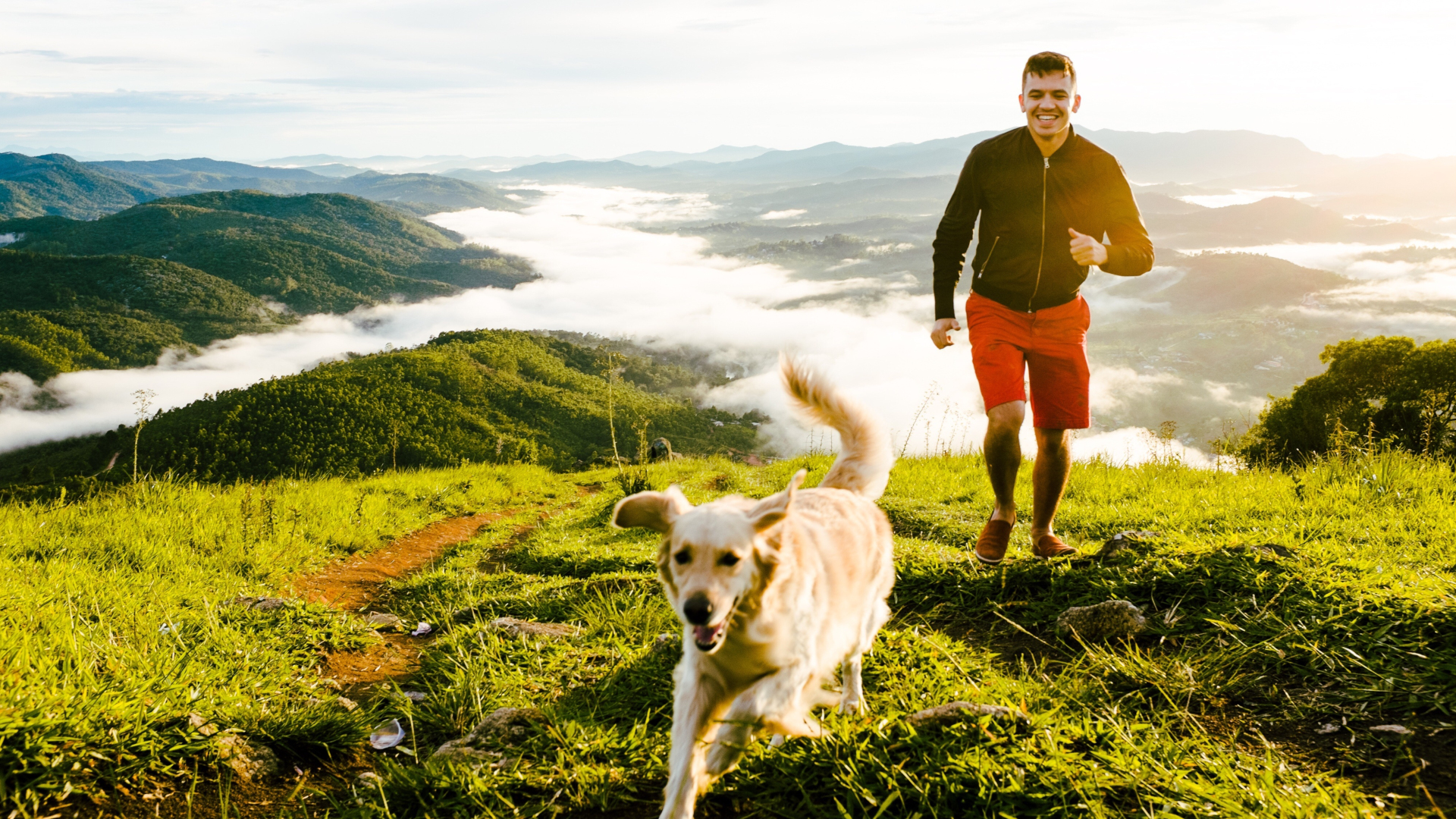
For someone that’s spent as much time on the hiking trails as I have, I feel pretty lucky not to have experienced or witnessed many medical emergencies. Hiking can be a dangerous activity, but besides the odd sprained ankle, skinned knee, one dislocated shoulder (not mine) and lots of blisters, my adventures have largely remained free of injury or major drama. But when it comes to dogs, however, it’s another story.
Colorado is an extremely dog-friendly state and in my 11 years living there, rarely did I hike without a canine companion, whether it was my own husky mix or a friend’s pooch (or three). And rarely did our pups come out from a hike unscathed. Bee stings, porcupine quills in the face, torn ACLs and even a paw sliced by a ski on a ski touring adventure, I think I’ve seen it all when it comes to doggy hiking emergencies.

Is hiking good for dogs?
It can be really distressing to see your pup limping out of the woods, but don’t forget that overall, hiking is probably great for your dog. The terrain provides them with good exercise, there’s lots of things to sniff, they may be able to run off-leash (if you’re not in a National Park anyway) and they’re free from urban hazards like traffic. It’s also a great way for you to enjoy exercise with them.
But if you’re going to be hiking with a dog, you need to know that there are lots more potential hazards out there than there are when you’re walking your dog through a city park. In addition to dehydration, heatstroke, hot paws and soft tissue damage from running on uneven terrain, you might have to watch out for falls in rocky areas (my cousin's dog fell 30 feet from a cliff and spent months in a cast), snake bites, porcupine quills and tick bites.
It all might sound a bit risky, but rather than keep your dog off the trail and away from all those lovely scents, your best approach is be prepared. In addition to your own hiking first aid kit which should come with you on every hike, we recently got some tips from Pawlicy Advisor on what to pack in your doggy first aid kit so you can take care of small bumps on the trail, or keep your pet comfortable until you can seek medical care from a vet.

What to pack in your doggy first aid kit
First off, you’ll of course want to carry a leash so you can secure your dog and keep it close when needed, for example if you come across a moose, a herd of elk or a bear on the trail. It’s a good idea to pick trails that are close to water sources, like a river, so it can stay hydrated, but if there isn’t a lot of water available, carry an extra water bottle for fido and a collapsible water bowl.
Additionally, Pawlicy Advisor recommends you carry the following items in your doggy first kit:
- Rubber gloves to avoid bacterial spread when tending to open wounds.
- Tweezers to remove objects such as ticks, sticky burrs and splinters.
- Dog-friendly antiseptic cream, gel or spray.
- Gauze and adhesive tape to cover wounds.
- Benadryl for dogs to treat allergic reactions (only use if instructed by your vet).
- Hydrogen peroxide to induce vomiting (only use if instructed by your vet).
- Muzzle in case needed during first aid or transportation.
- Your vet’s phone number.
These items won’t guarantee your dog doesn’t fall afoul of hiking hazards, but they’ll mean you can tend to minor ailments and keep your dog comfortable until it heals up or until you can get to the vet.
- Best hiking sandals: lightweight footwear for warm weather adventures







